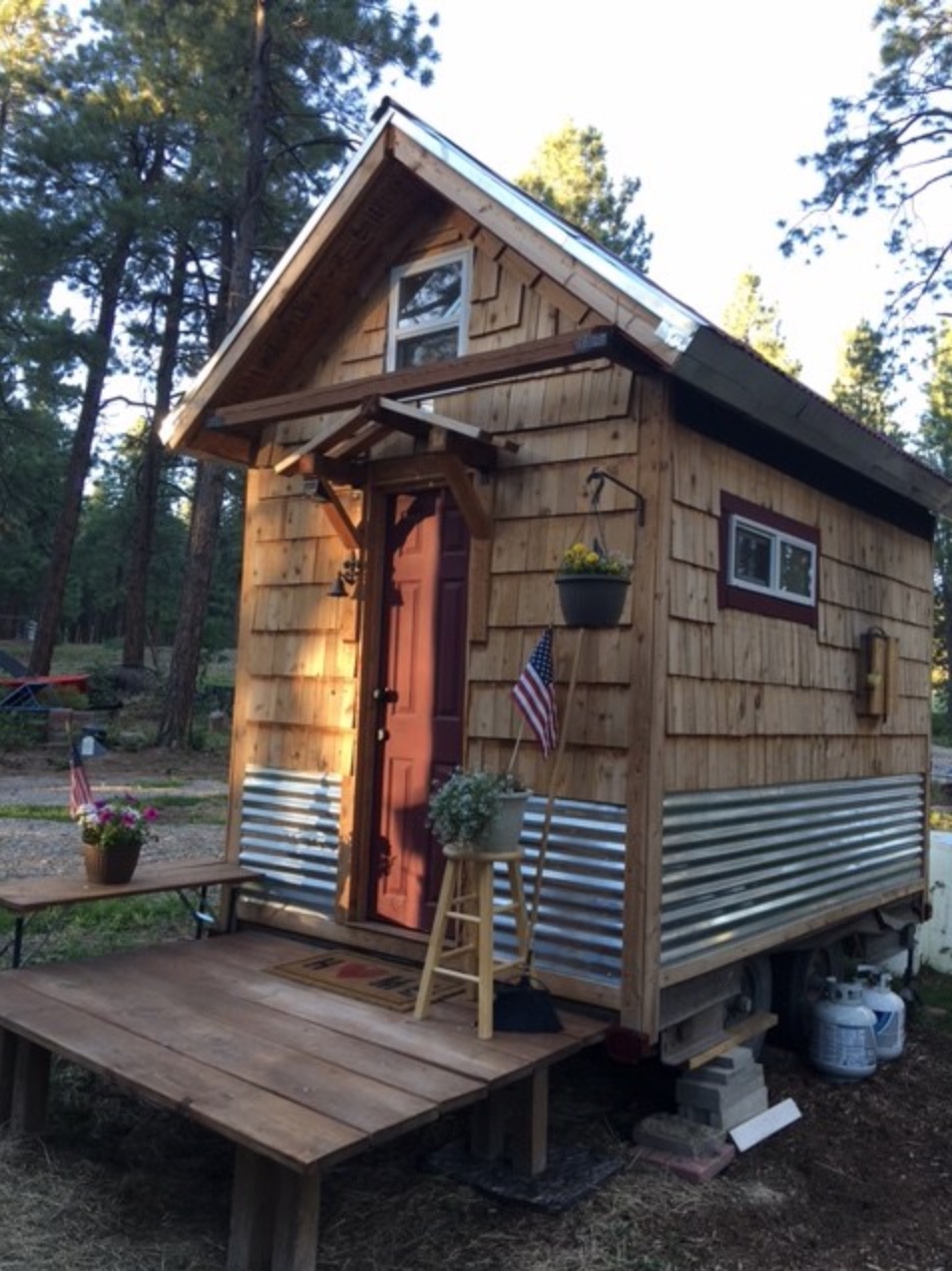Table Of Content

Each structure delivers premium living and are suited for any season. The mOne model from Haus is an off-grid studio with a bathroom and kitchen. It is a 400 sq meter home that is easily transportable to any location of your choice. This single story prefab cabin kit from Backcountry Hut Company is the ideal solution for off-grid living. The aesthetic of the cabin suits the rustic wilderness setting, whether you choose to live on the woods or by the lake. Save yourself the time and effort in searching for the best off-grid prefab homes.
Modern Amenities in a Compact Space
Off-grid tiny houses are small homes that are not connected to the traditional power grid, water supply, or sewage system. Instead, they are designed to be self-sufficient and sustainable, relying on renewable energy sources like solar panels, wind turbines, or hydroelectric generators. These homes are typically very small, ranging from 100 to 400 square feet, and are often built on wheels or on a foundation on a piece of land. Off-grid tiny houses have a much smaller environmental footprint than traditional homes.
Daily Life with Off Grid Homes and Cabins
The Solar Generator 2000 Plus can be entirely charged in only two hours using six SolarSaga 200W solar panels. The power source becomes self-sufficient by recharging itself with solar energy rather than the power grid. Solar panels can charge the first add-on battery pack in the industry, allowing for greater flexibility and saving time and energy during the charging process. Only when the sun is shining can solar panels generate electricity. Therefore, the power must be stored in batteries for nighttime use to save energy for cloudy or snowy days.
Tiny House Building Checklist
By considering these frequently asked questions and planning carefully, you can create a sustainable, comfortable, and enjoyable off-grid lifestyle. Insurance for tiny homes can vary depending on your location and the type of tiny home you have. You may need to have liability insurance if you plan on using your tiny home for business purposes, such as renting it out as a vacation rental.
Latest Tiny Houses

You may also want to consider insurance for your personal belongings and the structure of your home. Building and maintaining a tiny home requires a range of skills, including basic carpentry, plumbing, and electrical skills. You may also need to have skills in renewable energy and water management. If you don’t have these skills, you can learn them through books, online tutorials, or by taking classes at your local community college or adult education center. Turns out there are plenty of great solar-powered appliances that make living in your off grid homes as convenient as possible.
This tiny home features lap-style siding, wall framing, roof rafters, ZIP system wall panels, and doors and windows. However, the foundation is not yet included in the cost, so make sure to factor that in when buying this home. It has plenty of windows and a floor-to-ceiling window in the kitchen area. The energy-efficient design, the floor plan layout variations, and the good base price combine to make this one of the best off-grid tiny homes worth investing. If you’re searching for a tiny home that effortlessly merges sleek design with eco-friendly features, Minimaliste has got you covered.
Despite their small footprint, tiny homes can still offer many modern and luxurious amenities. Thanks to compact space innovation and creative design, tiny homes can have air conditioning, washer/dryer units, full stovetops, and even small bathtubs. These luxury features ensure that homeowners can enjoy the comforts of a traditional home in a smaller space.
Additional Resources and Further Reading: Where to Learn More
MOne has no wheels but can be easily relocated via a flatbed trailer. Unlike other prefabs, it doesn’t need a foundation system but can be set on flat ground. That patch of earth could be any setting; no power hookups required. The mOne off-grid tiny home is their smallest model, a 400 square feet studio layout. Its ladder doubles as access for the Murphy bed bunk installed above the sofa. From exterior fire-resistant Sho-Shugi-Ban siding to high-quality finishes, like granite countertops, this tiny home is made to last.
Off-Grid Living Essentials
Engage with the off-grid community through online forums, workshops, and other resources to share and gain knowledge. Collecting and storing rainwater is essential for off-grid living. Set up a well-designed rainwater catchment system to direct rainwater into storage tanks. Ensure the tanks are appropriately sized to meet your water needs and strategically positioned for easy access. Opt for a propane or wood-burning stove for cooking, as these methods are efficient and provide an authentic off-grid living experience. Solar ovens, which use the sun's energy for cooking, are also worth considering to reduce reliance on fossil fuels.
This Adorable Off-Grid Tiny Is Less Than 16-Foot-Long but Surprisingly Stylish - autoevolution
This Adorable Off-Grid Tiny Is Less Than 16-Foot-Long but Surprisingly Stylish.
Posted: Tue, 09 Jan 2024 08:00:00 GMT [source]
The 7-panel solar system harvests energy for the entire home, which you can upgrade to 24 panels, depending on the size of your chosen unit. It is built with a high-efficiency ducted heat pump system, air purification, and thermal-efficient walls. The home isn’t supported by wheels like most tiny homes, but it is designed to be easily assembled and disassembled. You enter the home via some steps and a deck area, where you are welcomed by a shared living room and kitchen. This space includes a breakfast bar, sofa, and kitchen unit with a sink, shelving, and sufficient space for a small fridge and portable stove. Despite their small footprint, tiny homes can include a wide array of modern and luxurious amenities such as air conditioning, washer/dryer units, full stovetops, and even small bathtubs.

Greywater systems can also be used to filter and reuse water from sinks, showers, and washing machines. Be sure to follow the instructions for using these systems carefully to avoid any issues with odors or health hazards. Living off-grid in a tiny home with children or pets is possible, but it requires careful planning and consideration. You will need to ensure that your tiny home has enough space to accommodate everyone, and that it meets your family’s needs for food, water, and waste management.
Because water storage is a key component of off-grid living, you will also need some water test strips that can test the pH of the water. Large, storm-grade windows are the best solution for lighting and wind protection. They can withstand hurricane-grade winds, and they allow you to enjoy the largest volume of natural light. For night time, you can use solar-charging LED lights that will provide safe lighting that candles cannot provide. A refrigerator, for example, provides immediate convenience by providing access to cool perishables. A freezer, however, provides for the future by extending the shelf life of foods, drinks, and other perishables.
Choosing a suitable location is essential when it comes to living off-grid. Consider factors such as climate, access to resources, and zoning laws before settling on a location for your tiny home. If you plan to use solar power, ensuring enough sunlight on your panels is also a critical location consideration. The area should have little shading, such as from trees, and should ideally be north-facing to maximize the sunlight your solar array receives. One of the most attractive aspects of off-grid living is the tremendous drop in utility bills.
Living an off-grid and sustainable lifestyle in a modern world is indeed a challenge for everyone. However, we really think that it is timely and necessary as it offers the opportunity to connect with nature. And the fact is, there are a lot of insights and strategies to carry out your off-grid a-frame house experience!

No comments:
Post a Comment